Did you know that Japanese cucumbers are not only delicious but also packed with health benefits? These slender and crunchy vegetables may be small in size, but they offer a world of flavor and nutrition. Whether you’re a gardening enthusiast or a food lover, Japanese cucumbers are a fantastic addition to your garden and your plate.
Japanese cucumbers are known for their thin skin, mild flavor, and juicy flesh, making them a perfect choice for salads, sandwiches, and snacking. With their high water content, they are incredibly hydrating and low in calories, making them a guilt-free treat. But the benefits don’t stop there! These cucumbers are also rich in vitamins A and K, as well as minerals like potassium and magnesium, contributing to healthy skin and proper digestion.
When it comes to gardening, Japanese cucumbers are relatively easy to grow. With some simple tips and techniques, you can enjoy a bountiful harvest of these refreshing veggies. From choosing the right variety to providing the ideal growing conditions, we’ll guide you through the process of cultivating your own Japanese cucumber plants.
Key Takeaways:
- Japanese cucumbers are a delicious and nutritious addition to your garden and meals.
- They are low in calories, high in water content, and rich in vitamins and minerals.
- Growing Japanese cucumbers is relatively easy with the right techniques and conditions.
- Harvesting Japanese cucumbers at the right time ensures optimal taste and quality.
- Japanese cucumbers can be used in a variety of dishes, adding a refreshing crunch.
Growing Japanese Cucumbers
When it comes to growing Japanese cucumbers, a little attention and care can go a long way in ensuring a bountiful harvest. Whether you’re a seasoned gardener or just starting out, these tips for growing Japanese cucumbers will help you cultivate healthy plants and enjoy the crisp, refreshing taste of homegrown produce.
Planting Japanese Cucumbers
One of the first steps in successfully growing Japanese cucumbers is selecting the right planting time. Wait until the weather is warm and settled, with night temperatures consistently above 50°F (10°C). This will provide the optimal conditions for germination and growth.
Prepare your soil by adding aged manure or compost to improve its fertility and moisture-retaining capacity. Japanese cucumbers thrive in well-drained soil with plenty of organic matter.
There are two main methods for planting Japanese cucumbers: in groups or in mounded hills.
If you choose to plant them in groups, space the seeds about 1.5 feet apart and plant them 1 inch deep. Planting in groups helps conserve space and allows for efficient pollination.
On the other hand, if you opt for mounded hills, create small mounds of soil and place 5-6 seeds in each hill. Make sure to space the hills about 3 feet apart to provide adequate room for the plants to sprawl.
Once the seeds are planted, it’s important to thin the seedlings to ensure strong and healthy plants. Remove any weak or overcrowded seedlings, leaving only the strongest ones to grow.
Japanese cucumbers are vining plants that benefit from vertical support. Consider installing trellises or cages to help guide their growth upward, saving valuable garden space and making harvesting easier.
Remember to provide consistent moisture throughout the growing season. Cucumbers require regular watering, particularly during dry spells, to prevent bitterness and ensure the development of high-quality fruit.
Growing Japanese Cucumbers Overview
| Aspect | Instructions |
|---|---|
| Planting Time | Wait for warm and settled weather with night temperatures above 50°F (10°C). |
| Soil Preparation | Add aged manure or compost to improve soil fertility and drainage. |
| Planting Method | Plant in groups or mounded hills, 1.5 feet apart or in hills spaced 3 feet apart. |
| Thinning | Remove weak or overcrowded seedlings, leaving only the strongest plants. |
| Vertical Support | Install trellises or cages to guide vine growth and save garden space. |
| Moisture | Maintain consistent moisture throughout the growing season. |
With these tips in mind, you’ll be well on your way to successfully growing Japanese cucumbers in your garden. Stay tuned for the next section, where we’ll explore the process of harvesting and using these delightful cucumbers in various recipes and dishes.
Harvesting and Using Japanese Cucumbers
Harvesting Japanese cucumbers is an exciting process that rewards you with crisp and flavorful produce. To ensure optimal taste and quality, it is important to know when and how to harvest these delightful cucumbers.
When to Harvest Japanese Cucumbers
Japanese cucumbers are ready to be harvested when the fruits are long and straight, and the seeds inside are not yet large. It’s best to avoid waiting until the cucumbers become overripe, as this can result in a bitter taste and tougher texture.
“Harvest Japanese cucumbers when they are long, straight, and the seeds are not yet large.”
To determine if a Japanese cucumber is ready for harvest, gently hold the fruit in your hand and examine its color, size, and firmness. The skin should have a vibrant green color and feel firm to the touch.
How to Harvest Japanese Cucumbers
When harvesting Japanese cucumbers, it is recommended to cut the cucumbers from the vine rather than pulling them. This helps prevent damage to the plant and ensures a clean break. Use a sharp pair of garden shears or a knife to make a clean cut just above the stem.
“Cut Japanese cucumbers from the vine rather than pulling them to prevent damage to the plant.”
Harvesting should be done every few days to encourage continuous fruit production. Regularly check your cucumber plants for ripe fruits and remove them promptly to make room for new growth.
Using Japanese Cucumbers in Your Kitchen
Japanese cucumbers offer a wide range of culinary possibilities. Their crisp texture and mild flavor make them a versatile ingredient in various dishes. Here are a few ideas for using Japanese cucumbers:
- Sliced in salads: Add thinly sliced Japanese cucumbers to your favorite salad recipe for a refreshing and crunchy twist.
- Sandwiches and wraps: Layer Japanese cucumber slices in sandwiches or wraps for an extra burst of texture and flavor.
- Pickling: Japanese cucumbers are great for making pickles. Experiment with different brines and spices to create your own unique pickling recipe.
- Cucumber water: Infuse water with slices of Japanese cucumber for a refreshing and hydrating beverage.
- Sushi and rolls: Incorporate Japanese cucumbers into sushi rolls or use them as a garnish for added crunch and freshness.
Remember, Japanese cucumbers do not require peeling and are best consumed within a day or two of harvesting for the most satisfying taste and quality.
| Japanese Cucumber Recipes | Description |
|---|---|
| Japanese Cucumber Salad | A refreshing salad made with thinly sliced Japanese cucumbers, rice vinegar, soy sauce, and sesame seeds. |
| Tsukemono (Japanese Pickles) | A traditional Japanese pickle dish made with Japanese cucumbers, salt, and various seasonings. |
| Hiyayakko (Cold Tofu) | A classic Japanese dish featuring cold tofu topped with diced Japanese cucumbers, soy sauce, and grated ginger. |
| Cucumber and Shrimp Sushi Rolls | A delightful sushi roll filled with cooked shrimp, avocado, and Japanese cucumber for a refreshing crunch. |
The Health Benefits of Japanese Cucumber
Japanese cucumbers offer a multitude of health benefits that make them a fantastic addition to your diet. Not only are they low in calories, but they also boast a high water content, making them a hydrating snack option that can help quench your thirst on hot summer days.
One of the key advantages of Japanese cucumbers lies in their impressive nutritional profile. They are a rich source of essential vitamins and minerals that support overall well-being. For example, they contain significant amounts of vitamins A and K, which play essential roles in maintaining healthy skin and promoting proper blood clotting.
“Japanese cucumbers are a great addition to a healthy diet, as they offer a range of important nutrients.”
In addition, Japanese cucumbers are packed with minerals such as potassium and magnesium, which contribute to maintaining proper bodily functions. Potassium helps regulate blood pressure levels, while magnesium supports muscle and nerve function.
Furthermore, these crunchy cucumbers are an excellent source of dietary fiber, which aids in digestion and promotes feelings of fullness. Incorporating fiber-rich foods like Japanese cucumbers into your diet can support a healthy digestive system and assist in weight management goals.
Here’s a closer look at some of the key nutritional components of Japanese cucumbers:
| Nutrient | Amount per 100g |
|---|---|
| Calories | 15 |
| Water | 96g |
| Protein | 0.6g |
| Total Fat | 0.1g |
| Carbohydrates | 3.6g |
| Dietary Fiber | 0.5g |
| Vitamin A | 105µg |
| Vitamin K | 16.4µg |
| Potassium | 147mg |
| Magnesium | 13mg |
As you can see, Japanese cucumbers are a nutrient-dense food that can be easily incorporated into your diet to enhance your overall health and well-being. Whether enjoyed in fresh salads, as a crunchy snack, or as an ingredient in various dishes, these cucumbers provide a refreshing and nutritious option for everyone.
Quench Your Thirst with Refreshing Japanese Cucumber Infused Water
If you’re looking for a way to enhance the taste of plain water while reaping the benefits of Japanese cucumbers, try making Japanese cucumber infused water. It’s a simple and delicious way to stay hydrated and stay refreshed throughout the day.
To make Japanese cucumber infused water, simply slice a fresh Japanese cucumber and add the slices to a pitcher of water. Let the water sit for at least an hour to allow the cucumber flavors to infuse. You can also add a few sprigs of fresh mint or a squeeze of lemon for added flavor. Enjoy this cool and revitalizing drink on a hot summer day or whenever you need a hydration boost.
Stay refreshed and healthy with the incredible health benefits of Japanese cucumber. Incorporate it into your meals and beverages to enjoy its crisp texture and hydrating properties, all while boosting your nutritional intake.
Varieties of Japanese Cucumber
Japanese cucumbers come in a variety of types, each offering its own unique characteristics and flavors. Here are some popular Japanese cucumber varieties:
- Tasty Treat Slicer: This variety is known for its thin skin, making it perfect for slicing. It has a crisp texture and mild flavor, which makes it a versatile option for salads and sandwiches.
- Tasty Green: Tasty Green cucumbers are another favorite among gardeners. They have a vibrant green color and a slightly sweeter taste compared to other varieties. These cucumbers are great for fresh consumption or pickling.
These are just a few examples of the many Japanese cucumber varieties available. It’s always a good idea to try different types to find the one that suits your taste preferences and culinary needs. Whether you’re looking for a cucumber with a delicate crunch or a sweeter flavor, the diverse range of Japanese cucumber varieties offers something for everyone.
Japanese Cucumber in Asian Cuisine
Japanese cucumbers are a beloved ingredient in Asian cuisine, particularly in traditional Japanese dishes. Their mild flavor and crisp texture make them a versatile addition to various recipes. Let’s explore some of the popular ways Japanese cucumbers are used in Asian cooking.
Japanese Cucumber Salad
One of the most refreshing and popular ways to enjoy Japanese cucumbers is in a traditional Japanese cucumber salad. Known as “sunomono,” this salad combines thinly sliced cucumbers with a tangy vinegar-based dressing. The salad is often garnished with sesame seeds or seaweed, adding extra flavor and texture.
“Japanese cucumber salad, or sunomono, is a delightful combination of crunchy cucumbers and tangy flavors. It’s the perfect side dish for any Asian-inspired meal.”
Japanese Cucumber Recipe
Japanese cucumbers are also frequently used in other Japanese recipes. They can be pickled, either on their own or as part of a mix of vegetables, creating a tangy and refreshing side dish. Additionally, Japanese cucumbers are commonly added to sushi rolls, providing a cool and crunchy contrast to the other ingredients.
Here is a simple recipe to make your own Japanese cucumber salad:
- Thinly slice 2 Japanese cucumbers.
- In a bowl, combine 3 tablespoons rice vinegar, 1 tablespoon soy sauce, 1 tablespoon sugar, and a pinch of salt.
- Add the sliced cucumbers to the dressing and toss until well-coated.
- Let the salad marinate in the refrigerator for at least 30 minutes to allow the flavors to meld together.
- Serve chilled and enjoy!
Japanese cucumbers are a delightful addition to any Asian-inspired meal. Their versatility and refreshing taste make them a favorite ingredient in Japanese cooking. Whether it’s a vibrant cucumber salad or a zesty pickle, Japanese cucumbers bring a distinctive crunch and flavor to the table.
Tips for Buying and Storing Japanese Cucumber
When it comes to buying Japanese cucumbers, there are a few important factors to consider. By following these tips, you can ensure that you select the best cucumbers for your needs.
- Look for firm cucumbers: Make sure the Japanese cucumbers you choose are firm and have no soft spots or bruises. This indicates that the cucumbers are fresh and will have a crisp texture.
- Check the skin: The skin of Japanese cucumbers should be smooth and vibrant in color. Avoid cucumbers with dull or wrinkled skin, as they may be past their prime.
- Consider organic options: If you prefer organic produce, look for Japanese cucumbers that are labeled as organic. These cucumbers are grown without the use of synthetic pesticides or fertilizers.
Once you have bought your Japanese cucumbers, it’s important to store them properly to maintain their freshness and crunchiness.
Storing Japanese Cucumbers:
- Refrigerate the cucumbers: Japanese cucumbers should be stored in the refrigerator to keep them cool and crisp. Store them in a produce bag or wrap them in a paper towel to help retain their freshness.
- Avoid storing at room temperature: Cucumbers can quickly lose their quality if left at room temperature. Keep them refrigerated to extend their shelf life.
With these tips in mind, you can confidently purchase and store Japanese cucumbers, ensuring that you always have fresh and delicious cucumbers on hand.
Japanese Cucumber for Gardeners
Gardeners everywhere are discovering the joy of growing Japanese cucumbers in their gardens. These cucumbers, known for their ease of cultivation and high yields, are a fantastic addition to any home garden. Not only do they offer a fresh and nutritious harvest, but they also provide a variety of benefits that make them a favorite among gardeners.
One of the advantages of growing Japanese cucumbers is their vertical growth habit. These cucumbers are well-suited for trellising or growing on a vertical support, which not only saves space in the garden but also makes it easier to harvest the fruit. By training the vines to grow upwards, you can maximize your garden space and optimize sunlight exposure for the cucumbers.
Another benefit of growing Japanese cucumbers is the opportunity to cultivate them organically. Using natural fertilizers and pest control methods, you can grow organic Japanese cucumbers right in your backyard. This allows you to enjoy the taste and freshness of homegrown cucumbers while avoiding harmful chemicals and pesticides.
Vertical Growing and Space Optimization
Growing Japanese cucumbers vertically offers several advantages. Firstly, it saves valuable garden space, allowing you to grow more plants in a smaller area. This is especially beneficial for gardeners with limited space or those who want to maximize their harvest. Secondly, vertical growing makes it easier to care for and harvest the cucumbers. The upright position of the vines eliminates the need to bend down or crawl on the ground, reducing strain on your back and knees. Additionally, the fruit is more accessible and visible, making it simpler to monitor the cucumbers’ growth and determine when they are ready to harvest.
When growing Japanese cucumbers vertically, providing a sturdy trellis or support system is essential. This can be as simple as using bamboo poles or wire mesh, ensuring they are tall enough to accommodate the growth of the cucumber vines. As the cucumbers develop, gently guide the vines onto the trellis or support structure, securing them with garden twine or clips when necessary. Vertical growing not only saves space but also improves air circulation around the plants, reducing the risk of disease and promoting healthier growth.
Organic Cultivation for Healthier Harvests
Growing organic Japanese cucumbers allows you to enjoy the benefits of homegrown produce while minimizing exposure to harmful chemicals and pesticides. Organic cultivation methods focus on maintaining soil health, using natural fertilizers, and controlling pests through environmentally friendly means. This not only helps preserve the natural balance of the ecosystem but also ensures that your cucumbers are safe for consumption.
Organic fertilizers such as compost, well-rotted manure, or organic matter enrich the soil, providing essential nutrients for the cucumber plants. Avoiding synthetic fertilizers eliminates the risk of chemical accumulation in the soil and groundwater, promoting long-term soil fertility. Natural pest control methods, such as companion planting or introducing beneficial insects, help manage pests without relying on harmful pesticides.
Gardening Tips for Successful Japanese Cucumber
To cultivate Japanese cucumbers successfully, follow these gardening tips:
- Choose a sunny spot in your garden with well-draining soil.
- Prepare the soil by incorporating organic matter such as compost or well-rotted manure.
- Plant the cucumber seeds or seedlings according to the recommended spacing and depth.
- Water the plants regularly, ensuring the soil stays consistently moist.
- Provide support for the vines as they grow, using trellises or other vertical structures.
- Monitor the plants for pests or diseases and take appropriate action if necessary.
- Harvest the cucumbers when they reach the desired size and appearance.
By following these tips, you can enjoy a bountiful harvest of fresh and crunchy Japanese cucumbers straight from your garden.
Comparison: Vertical Growing vs. Traditional Growing
| Vertical Growing | Traditional Growing |
|---|---|
| Maximizes garden space | Requires more garden space |
| Easier harvest and maintenance | Needs more bending and crawling |
| Promotes better air circulation | May have restricted airflow around plants |
| Less risk of soil-borne diseases | Higher risk of soil-borne diseases |
| Reduces pest infestations | More susceptible to pests |
As depicted in the table, vertical growing offers several advantages over traditional cucumber cultivation methods. From maximizing garden space to reducing pest infestations, vertical growing allows you to optimize your cucumber harvest while simplifying maintenance and care.
I love how Japanese cucumbers have transformed my gardening experience. Growing them vertically has made my garden more productive, and the fresh, organic harvests are incredibly rewarding. Plus, the crunchy texture and refreshing flavor of Japanese cucumbers make them the perfect addition to salads and sandwiches. If you’re a gardener looking for a delicious and low-maintenance crop, I highly recommend giving Japanese cucumbers a try!
Start growing Japanese cucumbers in your garden today and enjoy the benefits of vertical growth and organic cultivation. Your taste buds will thank you!
Japanese Cucumber: A Crunchy Delight in Your Garden
Japanese cucumber is a delightful addition to any garden, offering a crunchy texture and refreshing flavor. Whether enjoyed fresh in salads, sandwiches, or as a snack, or used in various recipes, Japanese cucumbers provide a satisfying crunch. Growing these cucumbers in your garden allows you to experience the joy of harvesting your own fresh produce.
If you’re looking for a vegetable that adds a satisfying crunch to your dishes, Japanese cucumber is the perfect choice. Its crispy texture enhances the taste and provides a refreshing element to any meal. From cool summer salads to refreshing sandwiches, the versatility of Japanese cucumber makes it a must-have in your garden.
Growing fresh cucumbers in your own backyard is a rewarding experience. Not only do you get to enjoy the flavor and crunch of freshly harvested cucumbers, but you also have the satisfaction of knowing that they are free from pesticides and other harmful chemicals.
Japanese cucumber is an excellent choice for gardeners due to its ease of cultivation and high yield. With proper care and maintenance, these cucumbers can thrive in your garden, providing you with a bountiful harvest.
Whether you have a small plot or a large vegetable garden, Japanese cucumber can be grown in containers or directly in the ground. They require full sun exposure and well-draining soil. Adding organic matter such as compost or aged manure to the soil can further enhance their growth and flavor.
Once planted, Japanese cucumber plants require consistent watering to ensure even and healthy growth. They also benefit from trellises or supports to encourage vertical growth and save space in the garden.
When the time comes to harvest your fresh cucumbers, make sure to pick them at the right stage of ripeness. Japanese cucumbers are best when they are firm, straight, and have a vibrant green color. Harvest them by cutting them from the vines, rather than pulling them, to avoid damaging the plants.
“Growing Japanese cucumbers in my garden has been a rewarding experience. The crisp texture and refreshing taste of these cucumbers elevate any dish I prepare!” – Megan, Home Gardener
Once harvested, Japanese cucumbers can be used in a variety of ways. Slice them up and add them to salads for an extra crunch, or use them as a delicious topping for sandwiches and burgers. Their mild flavor pairs well with a wide range of ingredients, making them a versatile choice for all your culinary creations.
The satisfaction of growing your own fresh cucumbers, combined with the pleasure of biting into a crunchy cucumber straight from your garden, is truly unbeatable. So, why not add Japanese cucumbers to your gardening plans? You’ll enjoy the rewards of their fresh and vibrant flavor, adding a delightful crunch to your meals.
Japanese Cucumber: A Versatile Ingredient
Japanese cucumbers are not only delicious, but they also offer incredible versatility in the kitchen. Their mild flavor and crisp texture make them a delightful addition to a wide range of recipes. Whether you’re making salads, wraps, stir-fries, or sushi rolls, Japanese cucumbers add a refreshing touch that perfectly complements other ingredients.
If you’re looking to add some crunch to your salads, simply slice or dice Japanese cucumbers and toss them with your favorite greens and dressings. The crispness of the cucumber adds a satisfying bite to every forkful.
For a quick and healthy snack, try pickling Japanese cucumbers. The preparation is simple – just soak the cucumbers in a mixture of vinegar, sugar, and salt, and let them marinate in the refrigerator for a few hours. The result is a tangy and refreshing pickle that can be enjoyed on its own or as a side dish.
When it comes to Asian dishes, Japanese cucumbers are a popular choice. Their crunchy texture pairs perfectly with the flavors of soy sauce, ginger, and sesame oil. Add sliced cucumbers to stir-fries or use them as a topping for sushi rolls to bring a fresh and vibrant element to your meal.
Experimenting with different recipes and cooking methods allows you to unlock the full versatility of Japanese cucumbers. Don’t be afraid to get creative and try new flavor combinations. You’ll be amazed at how this simple ingredient can elevate your culinary creations.
Recipes Using Japanese Cucumbers
- Japanese Cucumber Salad: Thinly slice Japanese cucumbers and toss them with rice vinegar, soy sauce, sesame oil, and a touch of sugar. Add some sliced red onions and sesame seeds for extra flavor and garnish.
- Vegetable Stir-Fry: Add sliced Japanese cucumbers to your favorite stir-fry recipe for a crisp and refreshing addition. They cook quickly, so be sure to add them towards the end to preserve their crunch.
- Cucumber Sushi Rolls: Use Japanese cucumbers as a filling for homemade sushi rolls. Pair them with avocado, crab stick, and sushi rice for a delicious and healthy treat.
As you can see, Japanese cucumbers are a versatile ingredient that can inspire countless culinary possibilities. Let your creativity flow and make the most of these crunchy and refreshing cucumbers in your cooking.
Conclusion
In conclusion, Japanese cucumber is a versatile vegetable that offers a refreshing crunch and a mild flavor to enhance any dish. With its thin skin and numerous health benefits, it is a popular choice among gardeners and food enthusiasts alike. Whether enjoyed fresh in salads or sandwiches, pickled, or incorporated into various recipes, Japanese cucumbers bring a unique taste and texture to the table.
By growing Japanese cucumbers in your garden, you can experience the joy of harvesting your own fresh produce and savoring the goodness of these crisp treats. With their abundant hydration and low calorie content, Japanese cucumbers offer a nutritious addition to your meals. Their role in Asian cuisine, as well as their versatility in different cooking styles, allows you to explore a wide range of culinary possibilities.
So why not incorporate Japanese cucumbers into your garden and culinary adventures? Enjoy the delightful crunch and the satisfying flavor of these versatile vegetables while reaping the benefits of their nutritional value. Whether you’re a seasoned gardener or a cooking enthusiast, Japanese cucumbers are sure to add a refreshing twist to your dishes and bring a touch of culinary creativity to your table.

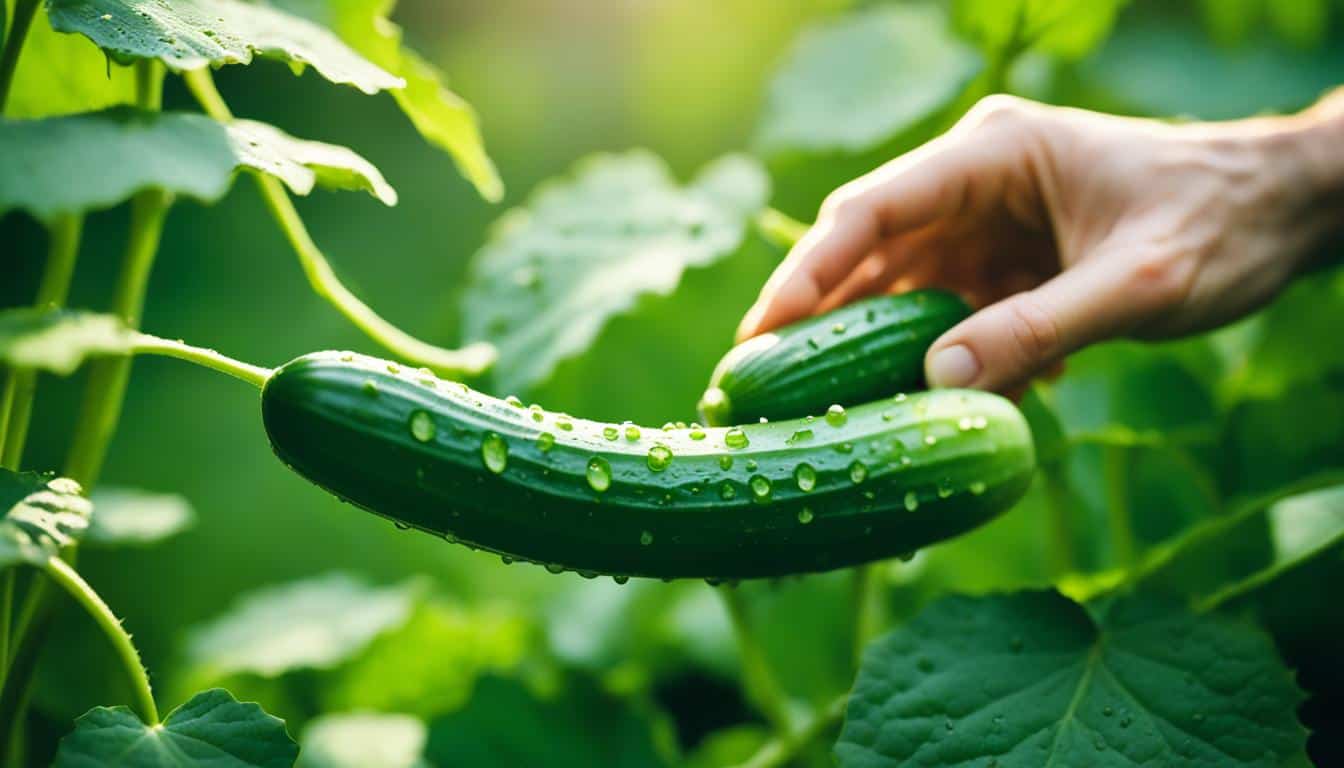
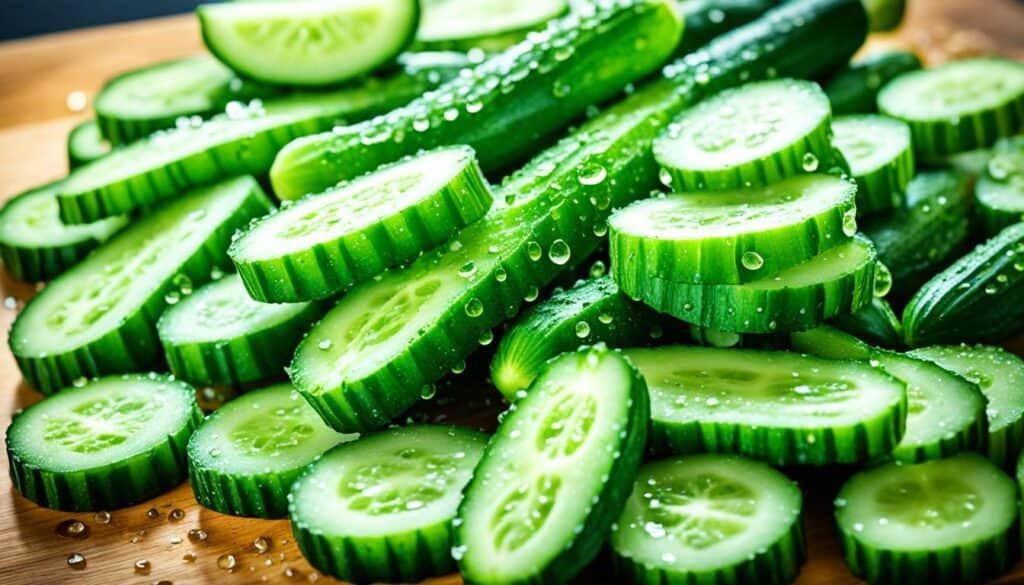
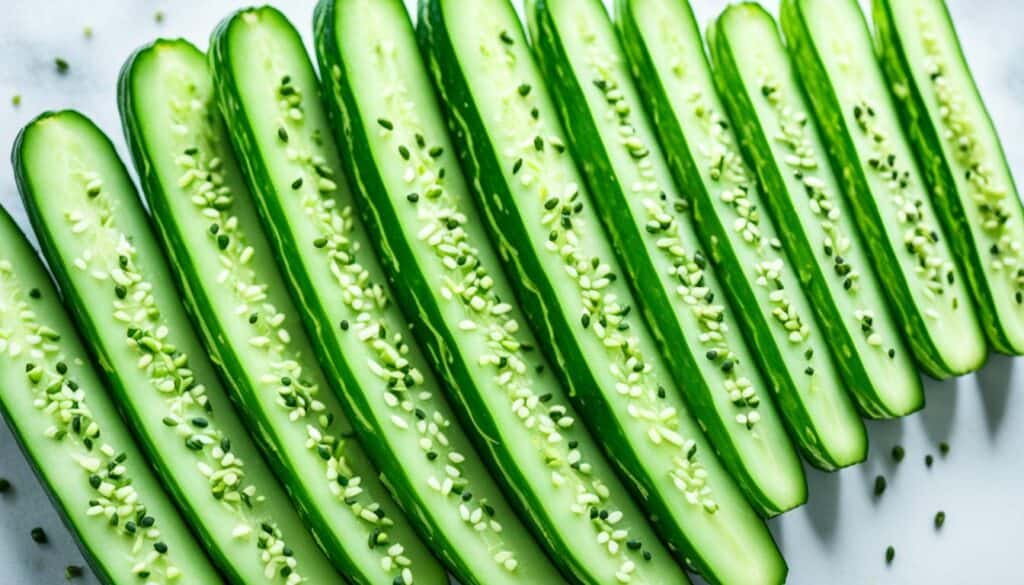
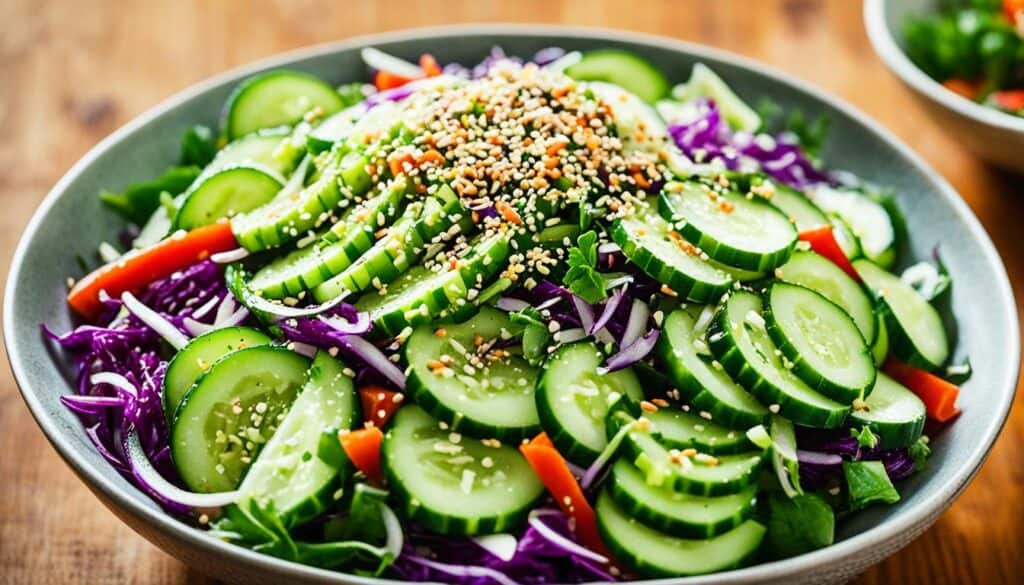
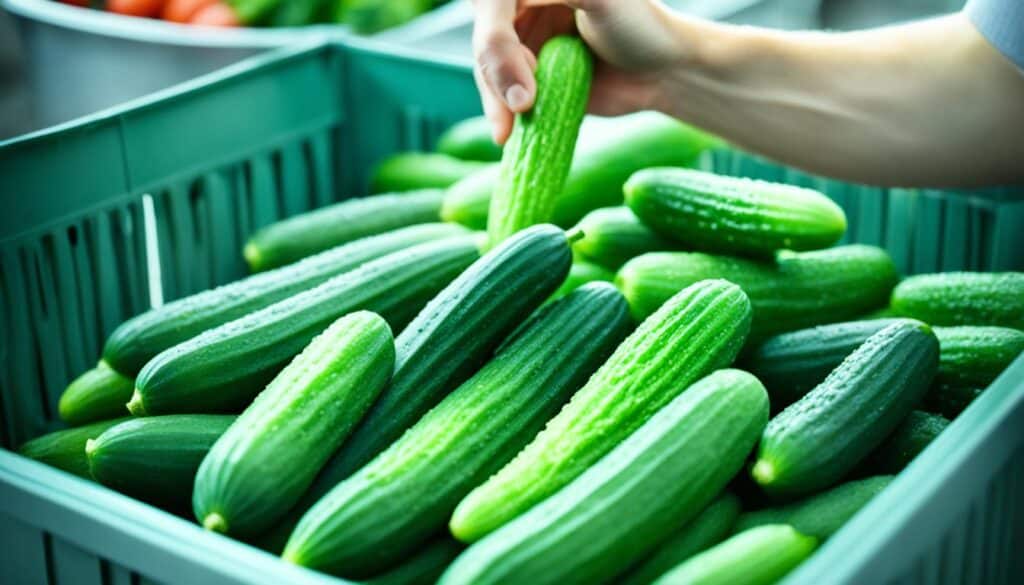
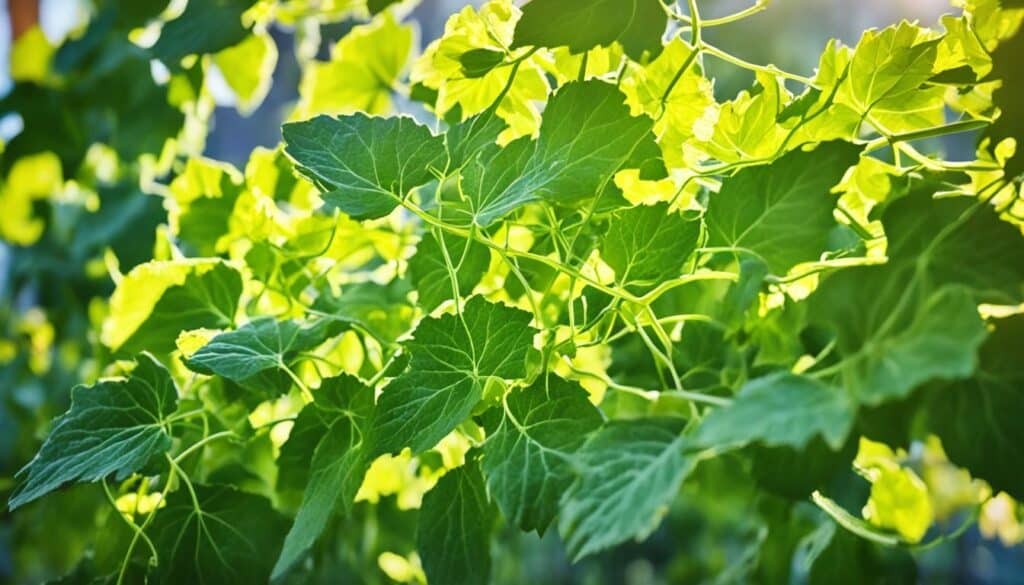



Leave a Reply